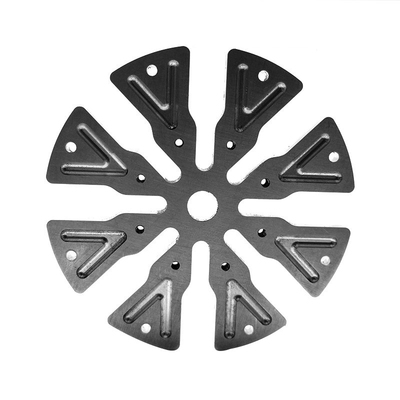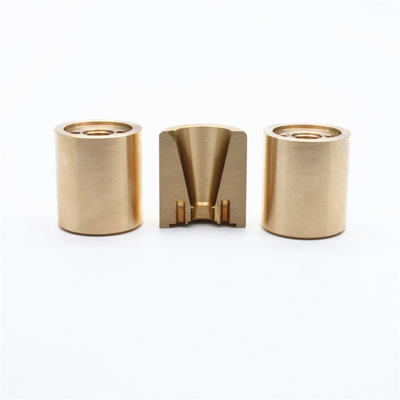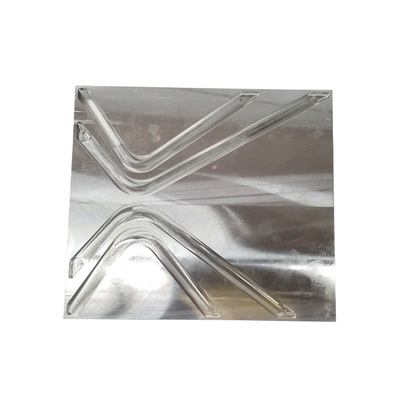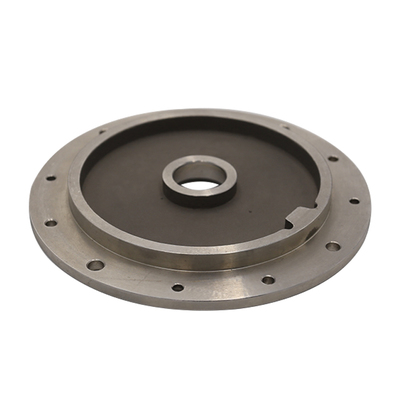Stainless Steel 201 vs. 304

Stainless steel, an alloy primarily composed of iron, chromium, and often nickel, is renowned for its corrosion resistance, strength, and aesthetic appeal. Among the numerous grades of stainless steel, 201 and 304 are two of the most commonly used. This article aims to provide an in-depth comparison of Stainless Steel 201 and 304, exploring their chemical compositions, mechanical properties, applications, advantages, and disadvantages.
Chemical Composition
Stainless Steel 201
Stainless Steel 201 is an austenitic chromium-nickel-manganese stainless steel that was developed to conserve nickel. The composition of Stainless Steel 201 typically includes:
- Chromium (Cr): 16-18%
- Nickel (Ni): 3.5-5.5%
- Manganese (Mn): 5.5-7.5%
- Nitrogen (N): 0.25%
- Carbon (C): 0.15% max
- Silicon (Si): 1% max
- Phosphorus (P): 0.06% max
- Sulfur (S): 0.03% max
The increased manganese content and reduced nickel content make Stainless Steel 201 a cost-effective alternative to the more traditional 304 grade.
Stainless Steel 304
Stainless Steel 304 is an austenitic chromium-nickel alloy and is the most widely used stainless steel. The composition of Stainless Steel 304 typically includes:
- Chromium (Cr): 18-20%
- Nickel (Ni): 8-10.5%
- Manganese (Mn): 2% max
- Nitrogen (N): 0.10%
- Carbon (C): 0.08% max
- Silicon (Si): 0.75% max
- Phosphorus (P): 0.045% max
- Sulfur (S): 0.03% max
The higher chromium and nickel content in Stainless Steel 304 provides enhanced corrosion resistance and formability compared to Stainless Steel 201.
Mechanical Properties
Stainless Steel 201
Stainless Steel 201 exhibits the following mechanical properties:
- Tensile Strength: 515 MPa (75 ksi) min
- Yield Strength: 275 MPa (40 ksi) min
- Elongation: 40% min in 2 inches
- Hardness: 95 HRB max
The higher manganese content imparts increased strength and hardness to Stainless Steel 201, but it can be less ductile compared to 304.
Stainless Steel 304
Stainless Steel 304 exhibits the following mechanical properties:
- Tensile Strength: 505 MPa (73.2 ksi) min
- Yield Strength: 215 MPa (31.2 ksi) min
- Elongation: 70% min in 2 inches
- Hardness: 92 HRB max
Stainless Steel 304 offers a good balance of strength, ductility, and hardness, making it suitable for a wide range of applications.
Corrosion Resistance
Stainless Steel 201
Stainless Steel 201 provides good resistance to corrosion in mild environments, but its performance is inferior to that of Stainless Steel 304. The reduced nickel content makes it more susceptible to corrosion in certain conditions, particularly in chloride-rich environments.
Stainless Steel 304
Stainless Steel 304 offers excellent corrosion resistance in a wide range of environments, including acidic and chloride-containing atmospheres. The higher chromium and nickel content significantly enhances its ability to withstand corrosion, making it a preferred choice for many applications.
Formability and Weldability
Stainless Steel 201
Stainless Steel 201 is known for its good formability and weldability. It can be readily formed and fabricated using standard processes, making it suitable for a variety of applications. However, the presence of higher manganese content can affect its performance in certain welding conditions.
Stainless Steel 304
Stainless Steel 304 excels in formability and weldability, making it one of the most versatile stainless steels available. It can be easily formed into complex shapes and welded using conventional techniques without the risk of sensitization or degradation in performance.
Applications
Stainless Steel 201
Stainless Steel 201 is commonly used in applications where cost is a significant factor, and the environmental conditions are not highly corrosive. Typical applications include:
- Food Service Equipment: Kitchen appliances, utensils, and cookware.
- Automotive Trim: Exterior and interior trim components.
- Architectural Applications: Decorative elements, light structural components.
- Consumer Goods: Sinks, door handles, and countertops.
Stainless Steel 304
Stainless Steel 304 is used in a wide range of applications due to its superior corrosion resistance and formability. Typical applications include:
- Food Processing Equipment: Tanks, pipes, and fittings used in the dairy, brewing, and pharmaceutical industries.
- Chemical Processing Equipment: Vessels, piping, and heat exchangers.
- Medical Devices: Surgical instruments, implants, and diagnostic equipment.
- Architectural Applications: Structural components, roofing, and facades.
- Marine Applications: Boat fittings, fasteners, and structures exposed to seawater.
Advantages and Disadvantages
Stainless Steel 201
Advantages:
- Cost-Effective: Lower cost due to reduced nickel content.
- Good Formability: Suitable for forming and shaping.
- Strength: Higher tensile and yield strength compared to 304.
Disadvantages:
- Corrosion Resistance: Lower resistance compared to 304, especially in chloride environments.
- Ductility: Less ductile than 304, which can affect performance in some applications.
- Weldability: Potential issues in certain welding conditions due to higher manganese content.
Stainless Steel 304
Advantages:
- Corrosion Resistance: Excellent resistance in a wide range of environments.
- Formability: Superior formability, suitable for complex shapes.
- Weldability: Excellent weldability with no risk of sensitization.
Disadvantages:
- Cost: Higher cost due to increased nickel content.
- Strength: Slightly lower tensile and yield strength compared to 201.
Environmental and Health Considerations
Stainless steels, including 201 and 304, are recyclable materials, which contribute positively to environmental sustainability. The recycling process for stainless steel involves melting scrap steel and refining it to remove impurities, thereby conserving natural resources and reducing energy consumption.
In terms of health considerations, both grades are generally safe for use in food contact applications, provided they meet regulatory standards. However, it is essential to ensure that the stainless steel used in such applications is free from harmful contaminants.
Conclusion
In summary, Stainless Steel 201 and 304 each offer unique properties that make them suitable for various applications. Stainless Steel 201 provides a cost-effective alternative with good strength and formability, making it suitable for less corrosive environments. On the other hand, Stainless Steel 304 offers superior corrosion resistance, formability, and weldability, making it the preferred choice for demanding applications in harsh environments.
The choice between Stainless Steel 201 and 304 ultimately depends on the specific requirements of the application, including factors such as cost, environmental conditions, mechanical properties, and regulatory standards. By understanding the differences between these two grades, users can make informed decisions to select the most appropriate material for their needs.
Reprint Statement: If there are no special instructions, all articles on this site are original. Please indicate the source for reprinting:https://www.cncmachiningptj.com/,thanks!
 3, 4 and 5-axis precision CNC machining services for aluminum machining, beryllium, carbon steel, magnesium, titanium machining, Inconel, platinum, superalloy, acetal, polycarbonate, fiberglass, graphite and wood. Capable of machining parts up to 98 in. turning dia. and +/-0.001 in. straightness tolerance. Processes include milling, turning, drilling, boring, threading, tapping, forming, knurling, counterboring, countersinking, reaming and laser cutting. Secondary services such as assembly, centerless grinding, heat treating, plating and welding. Prototype and low to high volume production offered with maximum 50,000 units. Suitable for fluid power, pneumatics, hydraulics and valve applications. Serves the aerospace, aircraft, military, medical and defense industries.PTJ will strategize with you to provide the most cost-effective services to help you reach your target,Welcome to Contact us ( sales@pintejin.com ) directly for your new project.
3, 4 and 5-axis precision CNC machining services for aluminum machining, beryllium, carbon steel, magnesium, titanium machining, Inconel, platinum, superalloy, acetal, polycarbonate, fiberglass, graphite and wood. Capable of machining parts up to 98 in. turning dia. and +/-0.001 in. straightness tolerance. Processes include milling, turning, drilling, boring, threading, tapping, forming, knurling, counterboring, countersinking, reaming and laser cutting. Secondary services such as assembly, centerless grinding, heat treating, plating and welding. Prototype and low to high volume production offered with maximum 50,000 units. Suitable for fluid power, pneumatics, hydraulics and valve applications. Serves the aerospace, aircraft, military, medical and defense industries.PTJ will strategize with you to provide the most cost-effective services to help you reach your target,Welcome to Contact us ( sales@pintejin.com ) directly for your new project.

- 5 Axis Machining
- Cnc Milling
- Cnc Turning
- Machining Industries
- Machining Process
- Surface Treatment
- Metal Machining
- Plastic Machining
- Powder Metallurgy Mold
- Die Casting
- Parts Gallery
- Auto Metal Parts
- Machinery Parts
- LED Heatsink
- Building Parts
- Mobile Parts
- Medical Parts
- Electronic Parts
- Tailored Machining
- Bicycle Parts
- Aluminum Machining
- Titanium Machining
- Stainless Steel Machining
- Copper Machining
- Brass Machining
- Super Alloy Machining
- Peek Machining
- UHMW Machining
- Unilate Machining
- PA6 Machining
- PPS Machining
- Teflon Machining
- Inconel Machining
- Tool Steel Machining
- More Material





